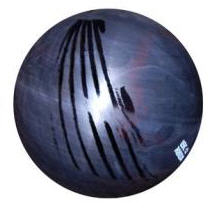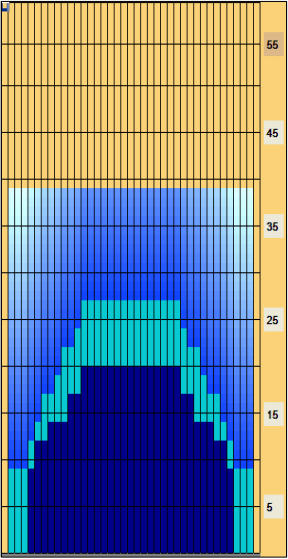Understanding oil patterns
There's WHAT on the lane?
Just like bowling balls, all bowling lanes are not the same. Wear and tear, lane makeup and, most importantly, the oil pattern make each bowling lane unique.
Have you ever noticed the slippery stuff on your ball after it comes back through the ball return? That's oil. And no, it doesn't go inside your car.

Today oil patterns affect the balls reaction as it goes down the lane. Oil is extremely important to the game. Originally oil was put on the lane to protect the lane surface. Without oil, your bowling ball would hit the lane, begin sparking, leave a burn mark and explode in the gutter. OK, it wouldn't be that bad, but it would hook too much and make the game nearly unplayable. You need oil to help control how much your ball hooks and to help you strike consistently.
So, what exactly is an oil pattern?

We've established the fact there is oil on the lane, but how does it get there?
Each center has a "lane machine" that is used to put the oil on the lane. The center mechanic programs a specific pattern into the machine, telling it how much oil to put down and where to put it.
Oil isn't spread evenly across the lane. Typically, there is much more oil in the middle of the lane than on the outside. This allows more "hook" from the outside part of the lane to the pocket.
The Rule of 31
How much of the lane oil covers really matters. The longer the pattern, the less your ball can hook. Knowing the pattern distance can help determine where the ball needs to be when it reacts toward the pocket.
Follow these rules to help get lined up on short or long oil patterns.
- Know the oil pattern length.
- Subtract the number 31 from the length of the oil pattern i.e. 41ft – 31 = 10.
Use the result as the target board for where your ball needs to be when it breaks toward the pocket (in this case, the 10 Board).
Types of Oil Patterns
You may watch the pros on Sundays bowl a 200 game and think to yourself, "Hey, I can bowl a 200. I could beat these guys." Well, the difference is the pros bowl on a much tougher oil pattern.
During league play, you bowl on a typical "house pattern" designed to give you a larger margin of error. Professional Bowlers Association (PBA) tournaments use a "sport pattern" and the margin of error is very small, which means the pros must hit the correct target each time in order to strike consistently.
During league, do you ever miss your target by five boards left or right but still strike? Of course you do, you're not E.A.R.L.! The reason you still strike is that there is a lot of oil in the middle part of the lane and very little on the outside part. If you are a right-handed bowler and miss your mark to the left, the extra oil toward the middle of the lane helps the ball hold position and not hook too much. If you miss to the right, there is less oil and the ball hooks more, allowing it to get back to the pocket.
However, on a Sport pattern, the oil is distributed more evenly across the lane. If a right-hander misses to the left, the ball will hook just as much. There is much more oil on the outside part of the lane, too, so an errant shot to the right might even slide into the gutter!
Summing it up, make sure to use your practice time wisely to find out exactly where the oil is before you begin your league or tournament session. If you can master this, you’re well on your way to being one of the elite in bowling.





